A tummy tuck is a moderately invasive surgical procedure. As such, you’re in for a relatively long road of healing after the fact. It’s imperative to know what this recovery journey involves before accepting the procedure. In this guide, we will teach you about the road to tummy tuck recovery so you can plan all aspects of it before ever setting foot into your exam room.
What to Expect While Recovering from a Tummy Tuck
Though the recovery process from a tummy tuck surgery is a bit different for everyone, there are certain things you can count on to take place during your recovery. The main factors that dictate how involved your recovery will be:
- Your age
- Your weight
- Your health
- How much fat and skin are being removed
However, the single most important part of your tummy tuck recovery will be planning it. Since your recovery will be relatively involved and somewhat long-term, it’s vital to plan the procedure during a time in your life when you can afford to take several weeks to rest and recover.
To begin with, you will need a friend or partner to take care of you during the first few days after your surgery. They will likely need to help you move around, prepare meals for you, and otherwise fetch things that you may need. Having a friend around during those first few crucial days is also an excellent way to keep another set of eyes watching for complications and the like.
During your healing process, you will need to pay special attention to various parts of your body. If you have drains placed in your procedure area after your surgery, these will require special care and cleaning until they can be taken out. In the same way, you may not be permitted to shower for several days or weeks following your procedure.
Typically, everyone who receives a tummy tuck procedure will be required to wear a compressive garment over their abdomen for several weeks. This keeps everything in place, helping to create the shape of your future figure, and also helps prevent fluid from building up within the procedure area.
Besides caring for any drains after your surgery, you will also need to be armed with certain information about your own recovery. You should know all about what you are and are not allowed to eat, how much rest you should be getting, how to wear and how to remove your compressive garment, when to return to your doctor, what sorts of activities can stress your incision, and signs of infection to watch out for, among other things.
Tummy Tuck Recovery Timeline
During your recovery time, there will be several milestones that will mark your progress. The first of these milestones will be the removal of any drains placed inside your procedure site to drain fluid. These drains are often left in for several days, then removed. You will want to return to your surgeon for the removal.
Additionally, depending on your age and health, you may be asked to resume walking as early as the day after your surgery. Staying active and mobile is the best way to stave off the formation of blood clots, which are a real danger after surgery. However, it’s essential not to attempt walking yourself until you’re sure you can handle it without stressing your procedure area.
You will be permitted to shower a full two days after your drains have been removed, and no sooner. However, if you can manage to sponge bathe without stressing your wounds before your drains are removed, this is okay. However, it’s recommended that you shower or sponge bathe in a chair for as long as necessary following your surgery.
The six-week mark is a big one when recovering from a tummy tuck procedure. After six weeks, you will finally be allowed to remove your compression garment. Additionally, any bans or restrictions on alcohol or cigarettes will be lifted at this time. Most patients are also cleared to return to most of their exercises and activities once they hit the six-week mark.
While your incision should be fully healed after six weeks, your scar will continue to fade for up to a full year after your surgery. For this reason, your doctor will recommend that you hold off from any invasive scar reduction surgeries or treatments until one full year has passed. Some of your treatment options to reduce the appearance of your scar include:
- Laser scar removal
- Surgical scar removal
- Topical creams and lotions
- Steroid treatments
- Skin grafting
How Painful Is It to Recover from a Tummy Tuck?
Tummy tuck recovery, like any invasive surgery, can be quite painful alone. However, your doctor will prescribe painkillers to you in addition to giving you helpful tips on how to keep yourself relatively pain-free. Regardless, you will not be able to avoid a bit of soreness that is common with this type of procedure.
Stressing your incision can be very painful and damaging, so it’s recommended that you follow your doctor’s advice and do everything possible to avoid damaging or stretching your procedure site.
How Soon Can You Go Back to Work After a Tummy Tuck?
After at least two weeks have passed, depending on your age, your healing, and your painfulness, you may be permitted to drive again and return to work. However, before this two-week mark, your doctor will recommend that you don’t drive or operate any motor vehicles. This can be especially true if you receive painkillers that can interfere with your ability to drive.
Tummy Tuck Recovery Tips
If you decide that you’d like to go forward with your tummy tuck procedure, your doctor will arm you with several different tips, tricks, and strategies that can help you on your road to recovery. We’ve listed a few of these below, too.
Sleeping Positions
Of course, it’s not recommended that you sleep on your stomach for several weeks following your surgery. Instead, sleeping on an inclined plane and on your back is generally the recommended sleeping position following a tummy tuck. If you have a mattress that adjusts to an incline, you should make use of this function as well as the leg-raising function to reduce swelling and pressure on your wounds.
If you do not have access to an adjustable bed, large, ergonomic body pillows exist that can accomplish the same thing. Alternatively, sleeping with several regular pillows can create the same effect.
If you commonly rest on the couch or in other areas of your house besides your bed, you should have pillows or other resting supplies set up here, too. After your procedure, you may feel fatigued and tired for several months, so preparing these rest areas is crucial to a proper recovery. Some items to keep handy include:
- Blankets
- Pillows (lots and lots of pillows)
- Neck pillows or other specialized supports
Walking After Surgery
Though you might initially think that you shouldn’t move or walk extensively for several days after your surgery, this is actually far from the case. Returning to walking after your surgery is complete is the best way to prevent or discourage the formation of blood clots.
However, it’s always essential that you walk carefully, of course, so as not to stress your incisions. The help of a friend or family member may be required to help you stand or walk for the first few days.
Healthy Eating
As with any surgical procedure, eating a healthy, balanced diet is an essential aspect of healing properly. If you attempt to diet excessively or don’t get proper nutrition during your healing process, your body may not have the nutrients it needs to heal. As such, your doctor will recommend that you postpone all non-essential diets before and for several months after your surgery.
Clothing Needs
After your procedure, you will be urged to wear large, loose clothing for several weeks so that your procedure area is not constricted, irritated, or otherwise stressed. It’s a good idea to have a small supply of loose clothing in several areas of your house, potentially near your bed and any other hangout spaces, such as your couch. These should be within convenient, easy reach for emergencies.
Shower Needs
As we mentioned above, you should have a chair in your shower for several weeks following your procedure to make bathing as stress-free as possible. While you’re at it, you may want to consider adding a removable showerhead, too.
Not only does this make it easier to reach different areas of your body to wash while you’re sitting, but it will cut down on your need to stretch or bend when washing after surgery.
Telephone Access
Last but not least, it’s always recommended that you keep a telephone within reach of your favorite areas in case unexpected complications arise. If you have a home phone, consider moving it close to your favorite relaxing spot, but at the very least keep a charger handy near this spot at all times for your cell phone.

